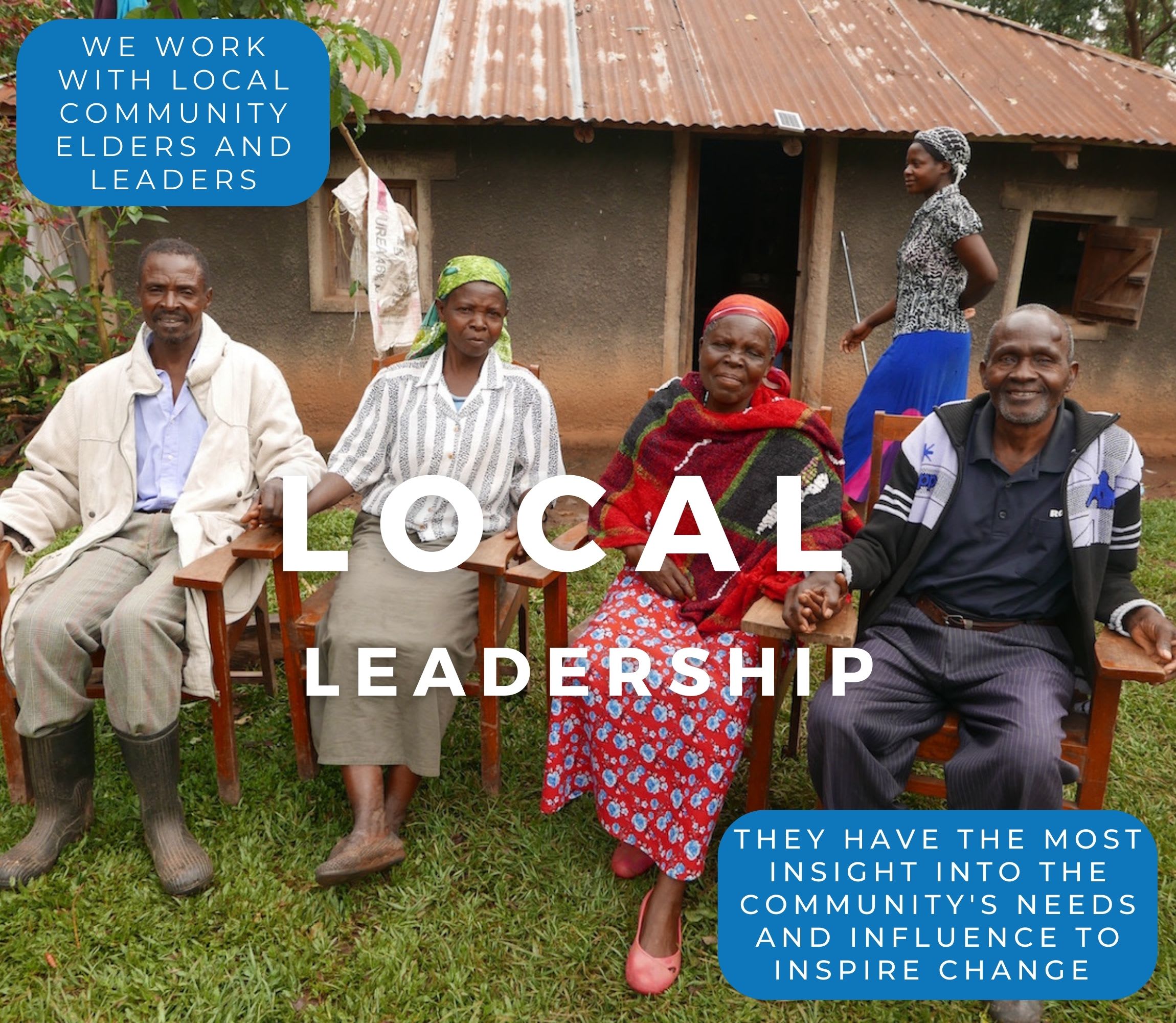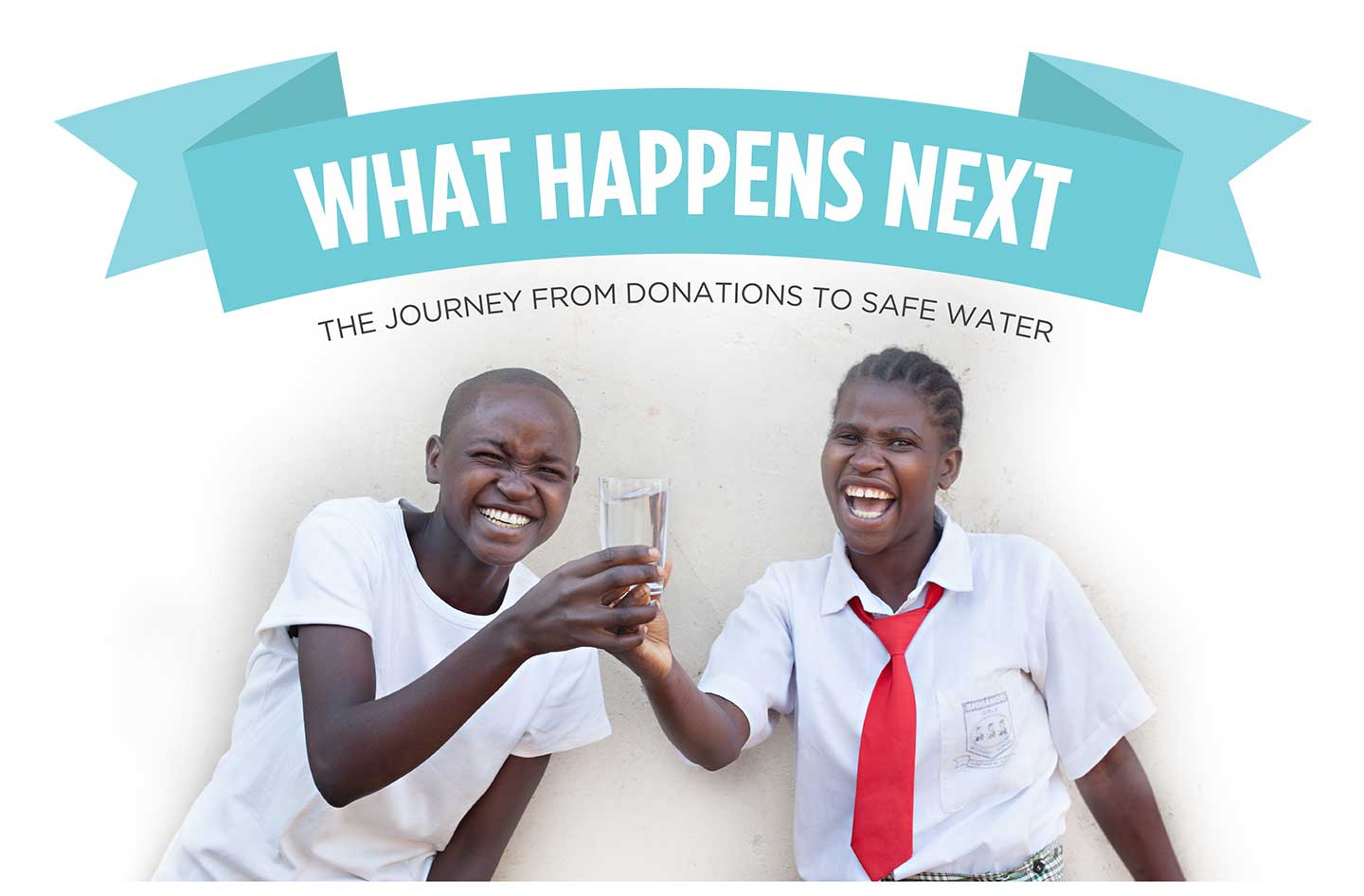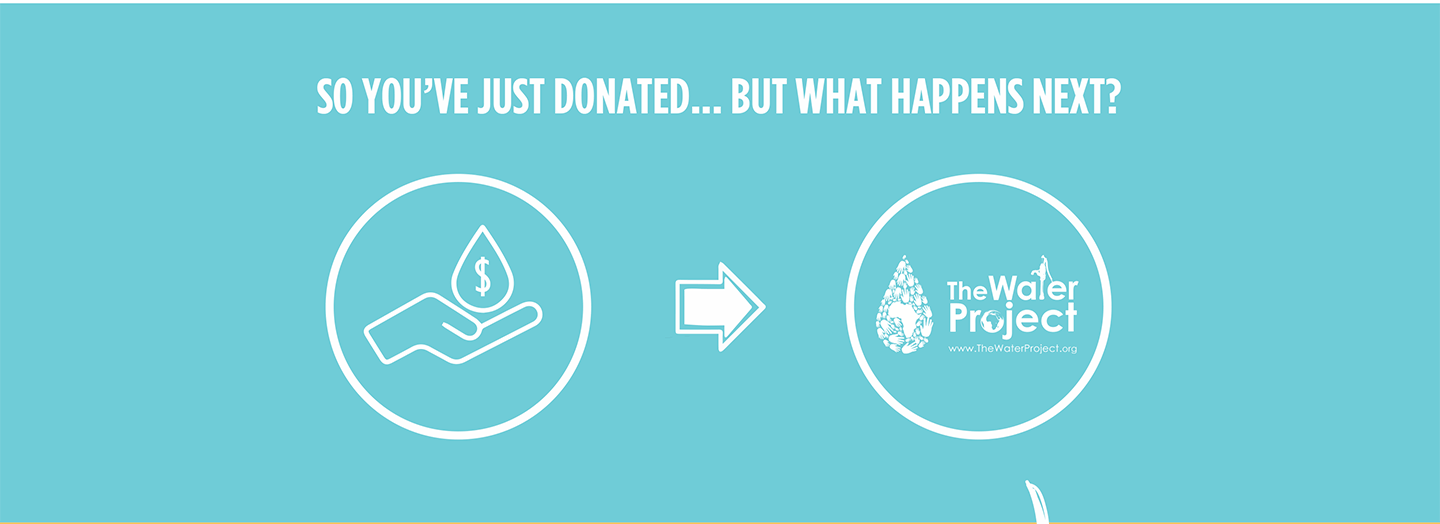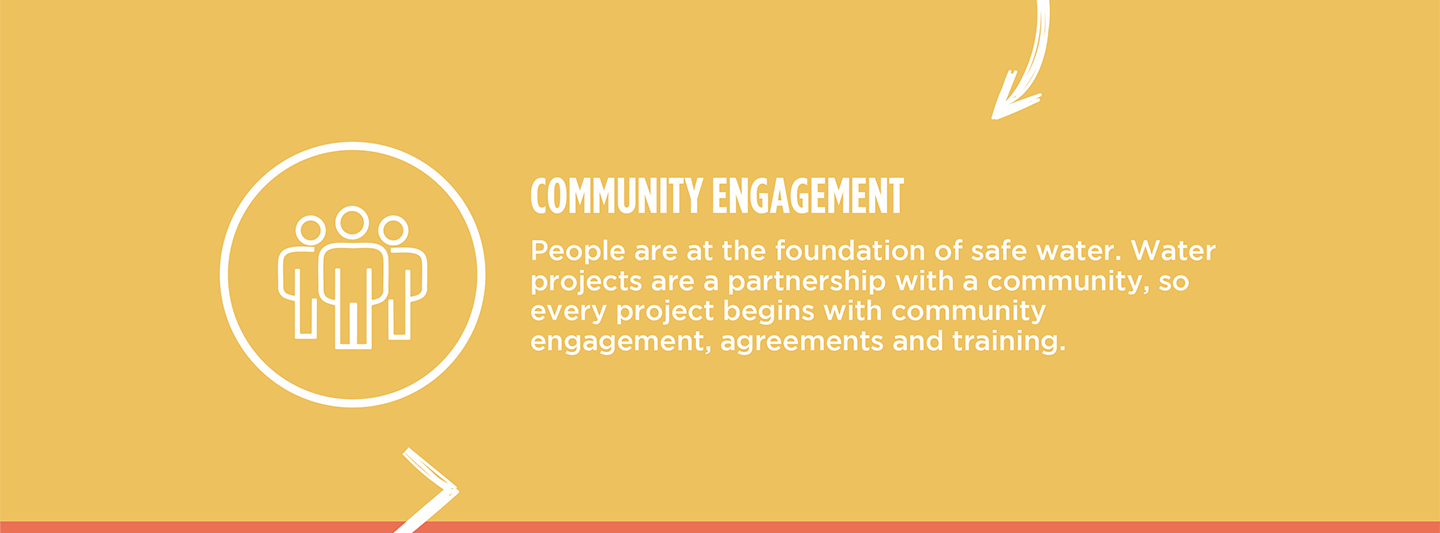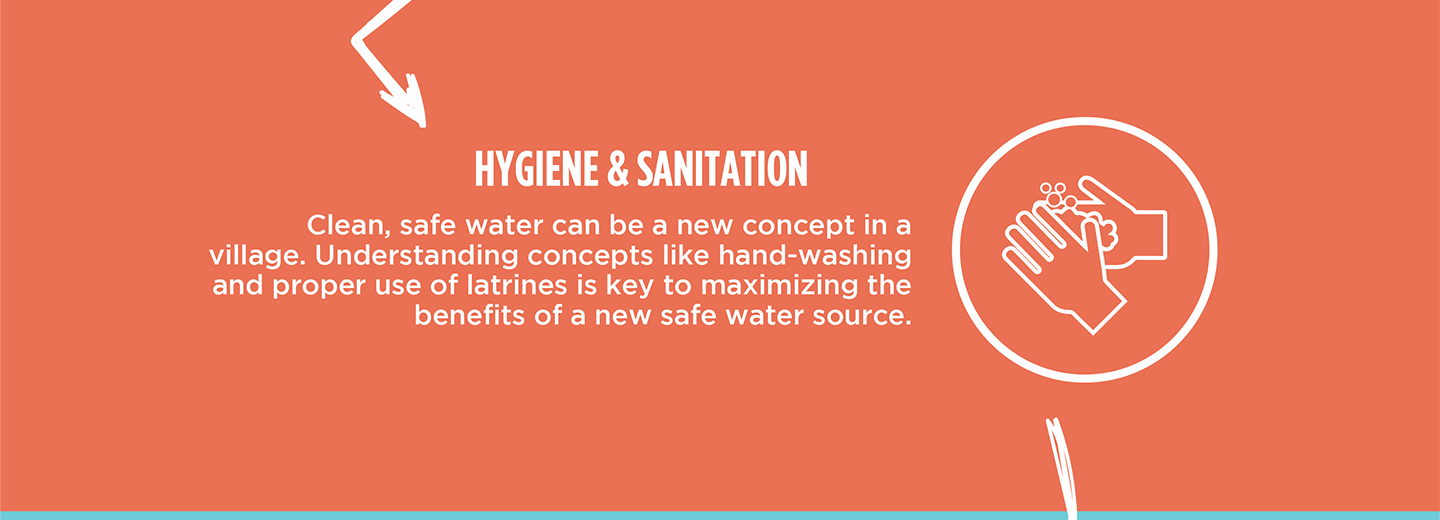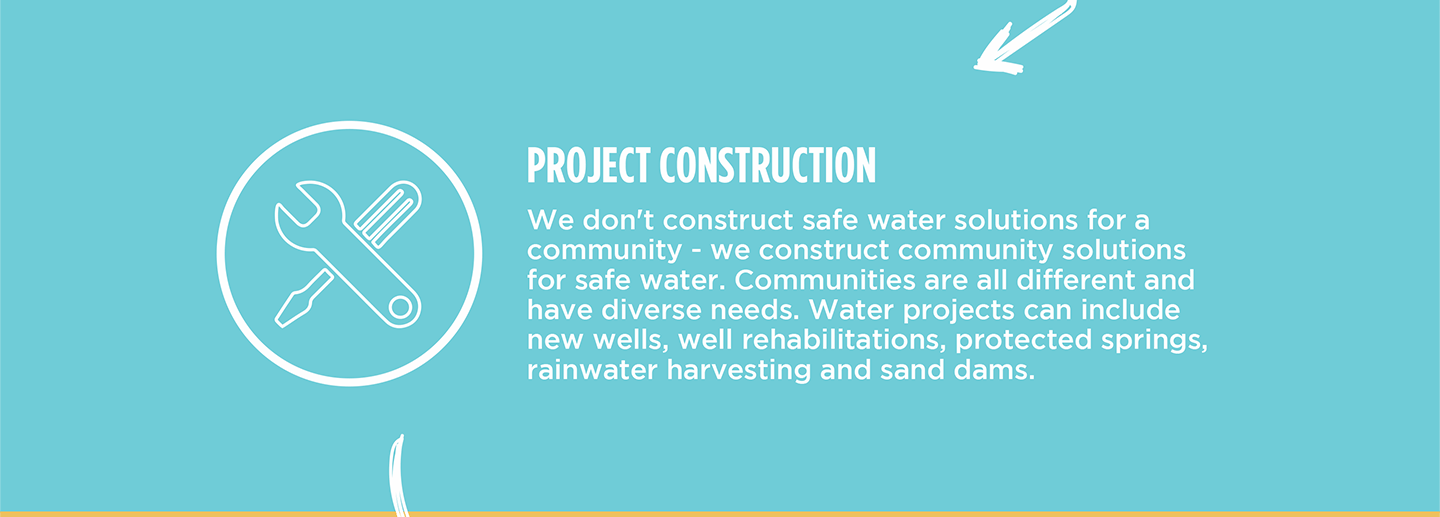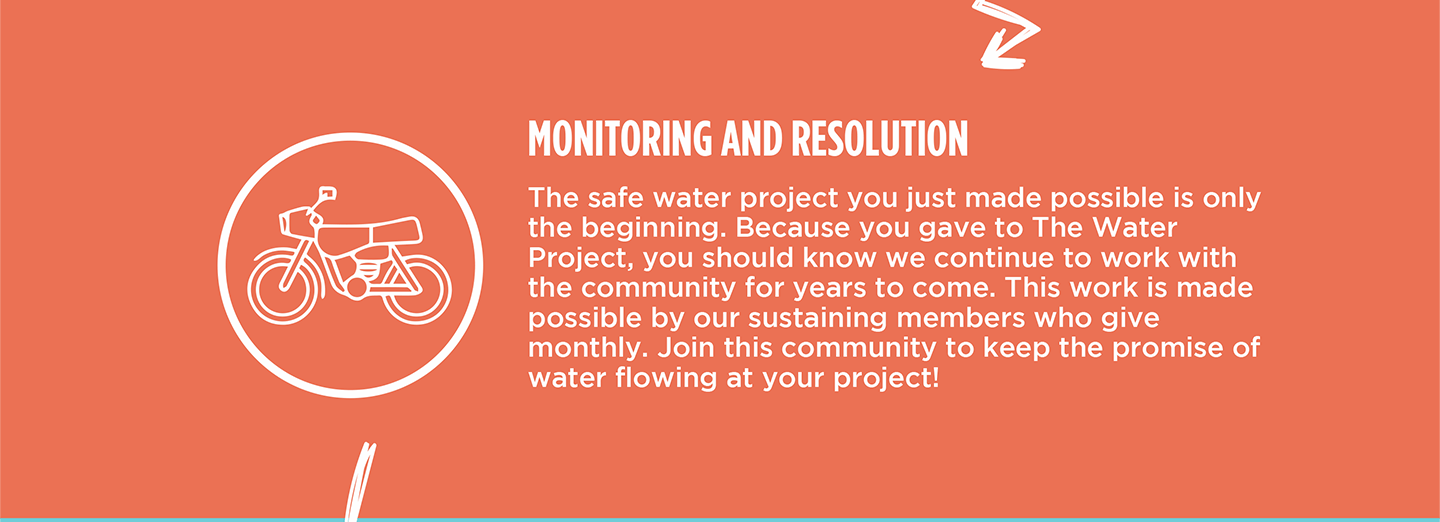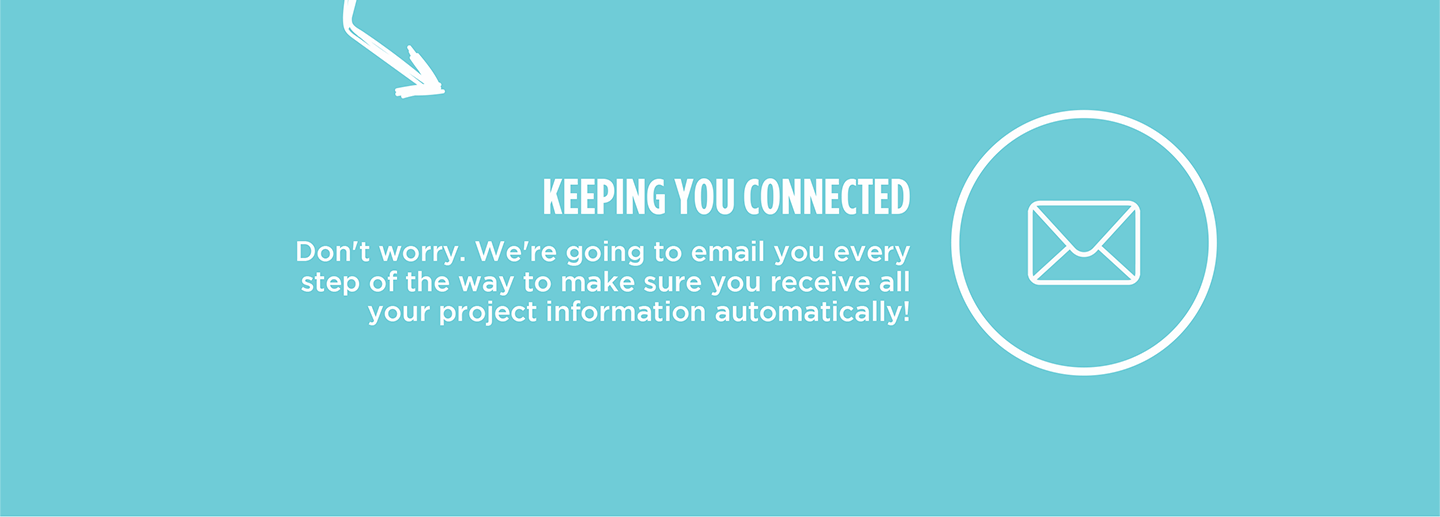The 1500 residents of the Kamukithe Community struggle to access water daily since they rely on scoop holes in a dry river bed. The water source is far away, overcrowded, and contaminated.

Field Officer Alex Koech shared about the community's water situation. "The scoop hole offers little water during the long drought periods, which culminates into long queues. It is also not protected; thus open to animal and wind contamination, which exposes residents to infections such as typhoid, amoeba, dysentery, and other water-related infections. The water is also not sufficient for the entire population; thus, residents have to wake up early to fetch water because even the neighboring communities depend on water from this water point."
"The water we drink is not clean because animals excrete at the water source, which exposes us to infections like typhoid and amoeba," said 36-year-old farmer Lazarus Mwendwa, shown below collecting water.

"This area is prone to long drought periods, which causes the scoop hole to offer little water. Residents from far away also come here to draw water during peak drought periods because scoop holes near their homes dry up," Lazarus said.
"Water is life. It means a lot to me as a farmer because I need water to earn an income. Without water, I will not be able to provide food for my family, and my children will be sent home for school fees," concluded Lazarus.
"Residents who live far away have to walk several kilometers to get water from the current water points while carrying 20-liter jerrycans on their backs or donkeys. This is a time-consuming and tedious task under the scorching sun, which leaves less energy and effort to conduct activities such as improving hygiene and sanitation, farming, or studies for pupils and students," continued Alex.
As Alex noted, adults are not the only ones who struggle; the children in the community have difficulty concentrating and studying at school because they lack sufficient water and spend so much time attempting to collect back-breaking amounts of water.
"The students do not have enough water to drink at school, and their energy and time are consumed by fetching water. This has culminated into several school drop-outs and dismal academic performance, hence [the] inability to access better career opportunities and livelihoods," said Alex.
"Fetching water takes a lot of my free time and energy making it difficult to focus on my studies. Sometimes I go back to school in the morning without attempting my homework," said 14-year-old Penniah, seen below scooping water.

"It feels bad to go and fetch water whenever I am not in school. I return home feeling very frustrated and unable to concentrate on my studies," concluded Penniah.
Community members like Lazarus and Penniah need a reliable, safe water source close to their homes. Then, they will be able to quickly collect water that will not harm them and still have the time and energy to complete other important things to have a brighter future.
Helping to solve the water crisis in this community will take a multi-faceted system. It requires the collaboration of the protected dug well and a sand dam. They will work together to create a sustainable water source that will serve this community for years to come.
Note: Our proposed water point can only serve 300 people per day. We hope to continue working with this community to identify other water solutions that will ensure all of the people in this community have access to safe and reliable drinking water.
The Proposed Solution, Determined Together...
At The Water Project, everyone has a part in conversations and solutions. We operate in transparency, believing it benefits everyone. We expect reliability from one another as well as our water solutions. Everyone involved makes this possible through hard work and dedication.
In a joint discovery process, community members determine their most advantageous water solution alongside our technical experts. Read more specifics about this solution on the What We're Building tab of this project page. Then, community members lend their support by collecting needed construction materials (sometimes for months ahead of time!), providing labor alongside our artisans, sheltering and feeding the builders, and supplying additional resources.
Water Access for Everyone
This water project is one piece in a large puzzle. In Kenya, Sierra Leone, and Uganda, we're working toward complete coverage of reliable, maintained water sources that guarantee public access now and in the future within a 30-minute round trip for each community, household, school, and health center. One day, we hope to report that this has been achieved!
Training on Health, Hygiene & More
With the community's input, we've identified topics where training will increase positive health outcomes at personal, household, and community levels. We'll coordinate with them to find the best training date. Some examples of what we train communities on are:
- Improved hygiene, health, and sanitation habits
- Safe water handling, storage & treatment
- Disease prevention and proper handwashing
- Income-generation
- Community leadership, governance, & election of a water committee
- Operation and maintenance of the water point
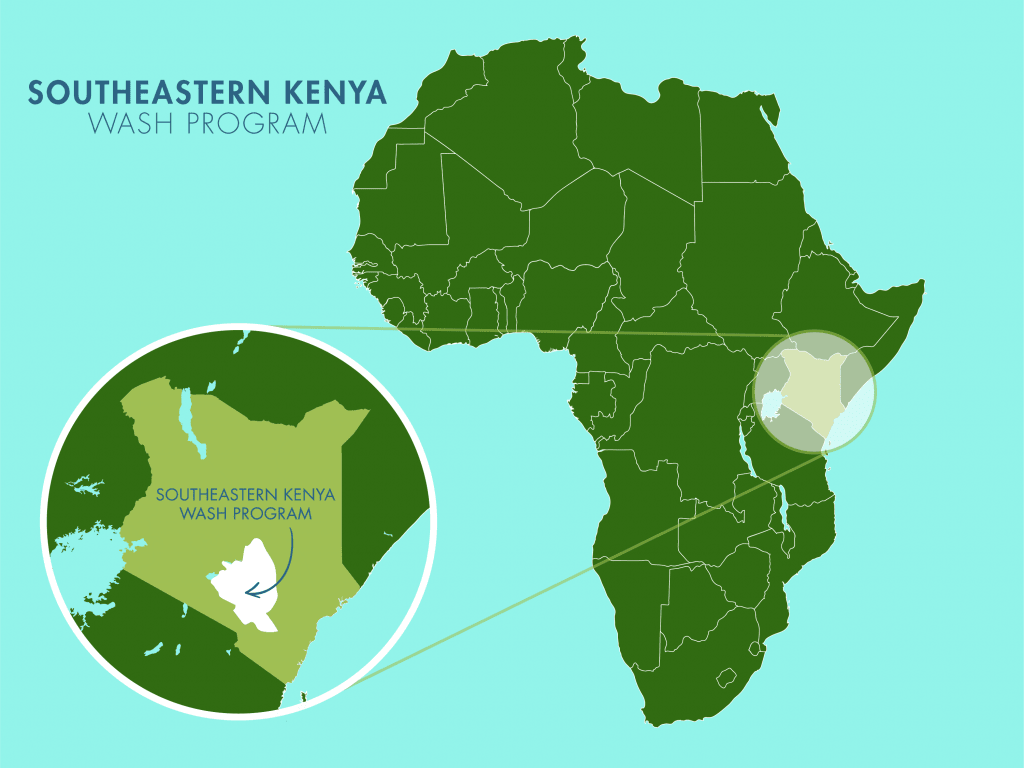
 Protected Dug Well
Protected Dug Well
 Rehabilitation Project
Rehabilitation Project

